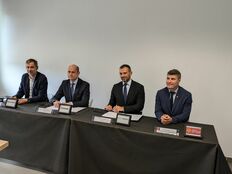- The project aims to transform Port-La Nouvelle into a hub for hydrogen and CO2 by 2026.
- The Occitanie Region plans a €150 million investment to advance low-carbon energy goals.
- Hydrogen import capacity could reach 2 million tons annually.
- The port expansion includes dredging to 15.9m and creating 150 hectares of land.

Overview
On September 20, 2024, a Memorandum of Understanding (MoU) was signed to develop Port-La Nouvelle into a strategic hub for low-carbon hydrogen and CO2 management. This collaboration involves the Occitanie Region, DEME Concessions NV, Euroports, and Teréga, aiming to support the energy transition at both regional and European levels.
Project Objectives
The partnership focuses on creating port and logistics infrastructures to handle clean molecules like hydrogen and CO2. The project will connect Port-La Nouvelle to major hydrogen and CO2 transport infrastructures, enhancing its role in the energy transition. The port is set to become a platform for importing and exporting hydrogen, CO2, and low-carbon by-products, with a potential hydrogen import capacity of 2 million tons per year.
Infrastructure Development
SEMOP Port-La Nouvelle, the port's concessionaire, has already undertaken significant expansion work, including dredging to 15.9 meters to accommodate large ships and creating over 150 hectares of land. Specialized jetties for liquid bulk handling are under construction, with completion expected by 2026.
Regional Impact
This initiative aligns with the Occitanie Region's REPOS strategy, which aims to achieve 100% renewable energy by 2050. The project is expected to boost the region's industrial and energy appeal while fostering job creation. The Occitanie Region has committed €150 million to advance its low-carbon energy objectives, recognizing the potential of green hydrogen early on.

